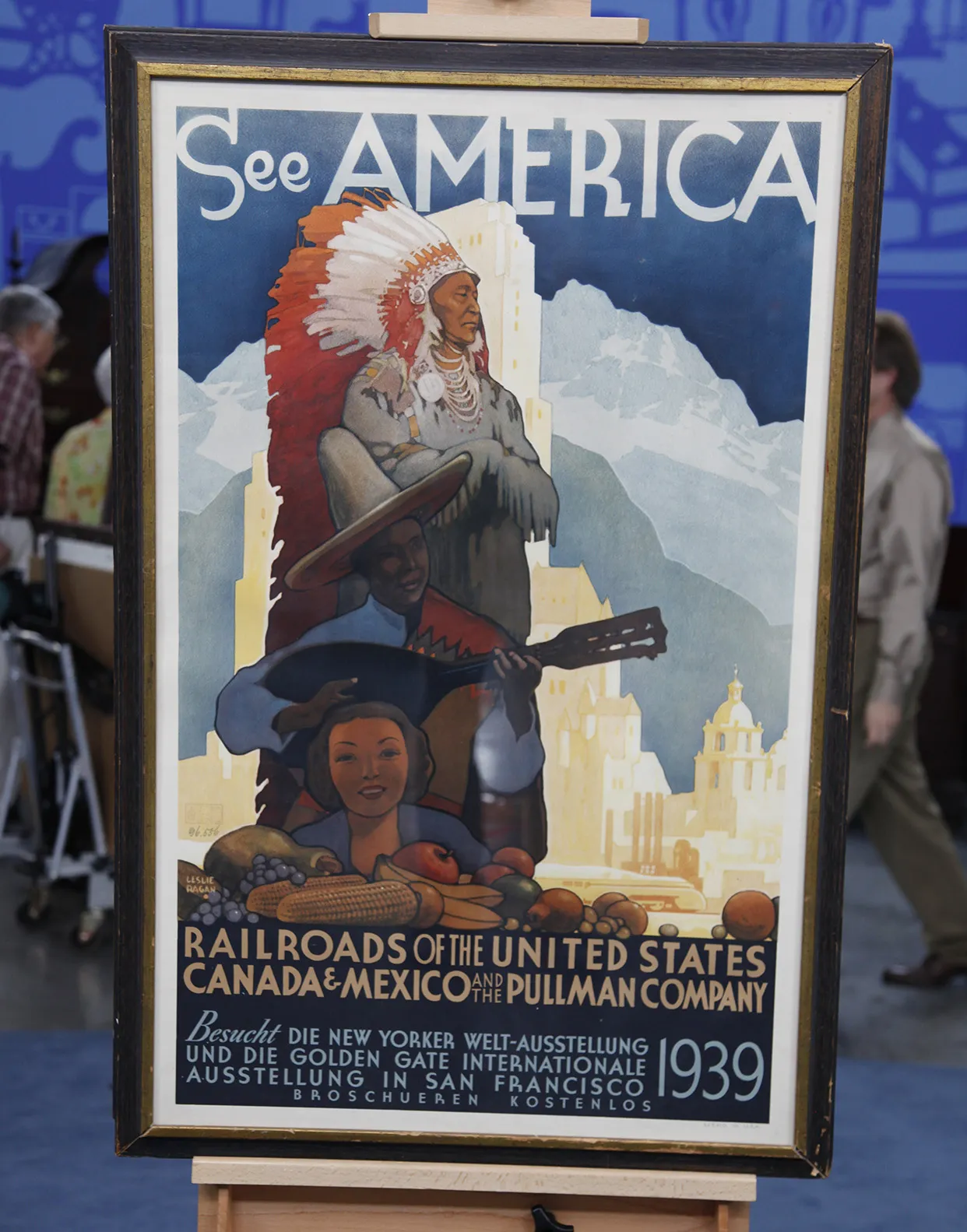On Track With Railroad Ephemera
Rudy Franchi explains how to get rolling on your own collection.

Jun 13, 2005
Building Blocks
Many people who love trains covet the miniature ones that are unpacked just before the winter holidays and put on tracks that run around Christmas trees. But Rudy Franchi, an ANTIQUES ROADSHOW poster expert, suggests that people who love railroads might want to start their train collections by buying the paper ephemera that once traveled with real passenger trains—such as schedules, tickets, calendars, and dining car menus.
"In any collection, you always start with the building blocks, and in this case it's the tickets and the train schedules," Rudy says. "You start there because it's stuff that's fairly accessible. If you start at the top—a 1930s object from the 20th Century Limited train, for example—you'll be looking for a long time. Even if it's cheap stuff you're collecting, at least you'll feel like you're accumulating something."
We asked Rudy, who has been collecting train ephemera since the 1960s, where someone interested in train ephemera might begin. Here's the track he sent us down.
Tickets and Schedules
The cheapest ephemera in the field are the old train tickets and schedules that railroad lines provided to passengers. "The schedules were produced in great quantities and multiple editions, so they show up with great regularity," Rudy says. "You can find most of them for about five or ten bucks, and if you find an absolutely beautiful one, you can get it for under a hundred dollars." You can find almost any used train ticket, Rudy says, for under $10. Passes given out to employees are not quite as common, and sell in the $15 to $25 range.
"You can find these at any ephemera dealer, book dealer, or at a large flea market," Rudy adds.
One of the train ephemera categories that Rudy is most fond of is the dining car menu. "My grandfather was the head of food services for Canadian National Railways," Rudy says, referring to Canada's government-owned railway system. "Every summer my mother would put me on a train to Ottawa with him and we would get on in Newfoundland and then cross Canada by train. I was always fascinated by the menus." Rudy's grandfather, a hunter, would help design the menus, and sometimes put deer and bear on their covers. Almost all menus sell for under $60; some collectors specialize in the children's menus.

Posters and Calendars
If a collector of train ephemera wants to move up to a more expensive level of collecting, then Rudy recommends the train posters and calendars that the companies often put out as advertisements. The advertisements were made by the thousands by the railroad's own printing presses. Some of the most collectible calendars, such as those made for the 20th Century Limited line in the 1920s and 1930s advertising their streamlined trains, were created in large formats. These are among the most attractive and most valuable, and rare ones often sell for several thousand dollars at auction.
"At the very top of the line are the great train posters," Rudy says. "The New York Central posters are some of the best." The companies used the same images for their posters as they did for their calendars, except they often made the posters larger because they were intended for display at travel agencies. These posters sell from about $50 to upwards of a few thousand each, depending on the condition and the era they were printed in." Once you start collecting, Rudy recommends that you find ways to narrow your collection. "There's a lot of people who collect Northwestern train ephemera, or the Pacific railways that go up the coast," Rudy says. "Or they'll pick a certain line, like the Pennsylvania Railroad." Subway lovers often focus on collecting subway posters made for New York City or London. "The London Underground commissioned great artists to make their posters in the 30s, 40s, and 50s," Rudy says. Sometimes buyers of train posters narrow the search down even further, focusing on the train posters and ephemera that deal with their hometown as a destination. After all, Rudy notes, "People who live in Bristol want Bristol posters."





